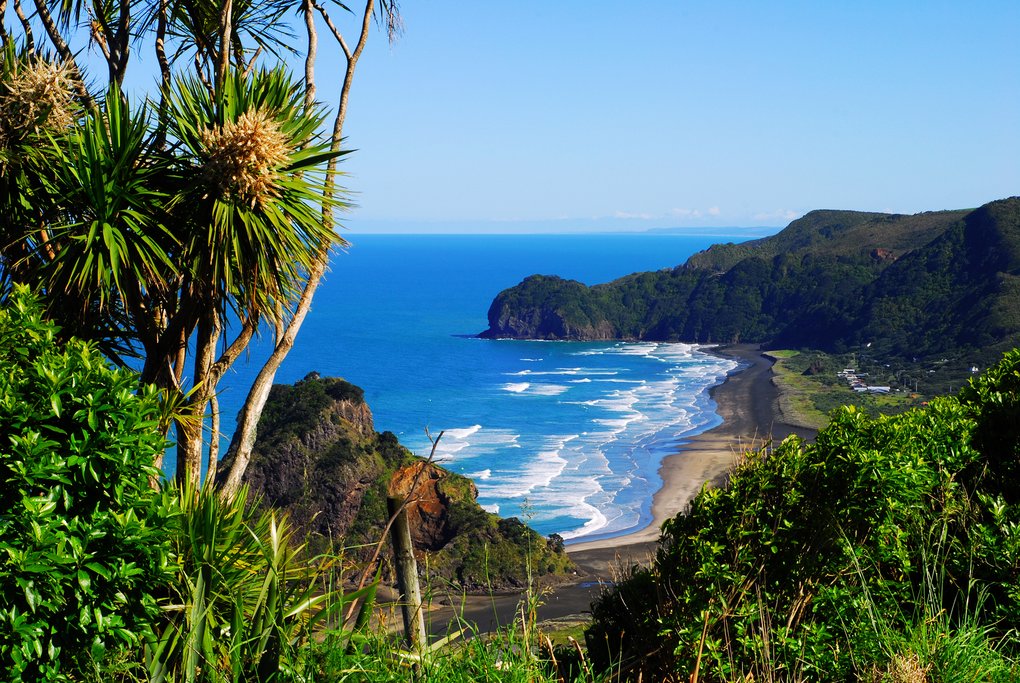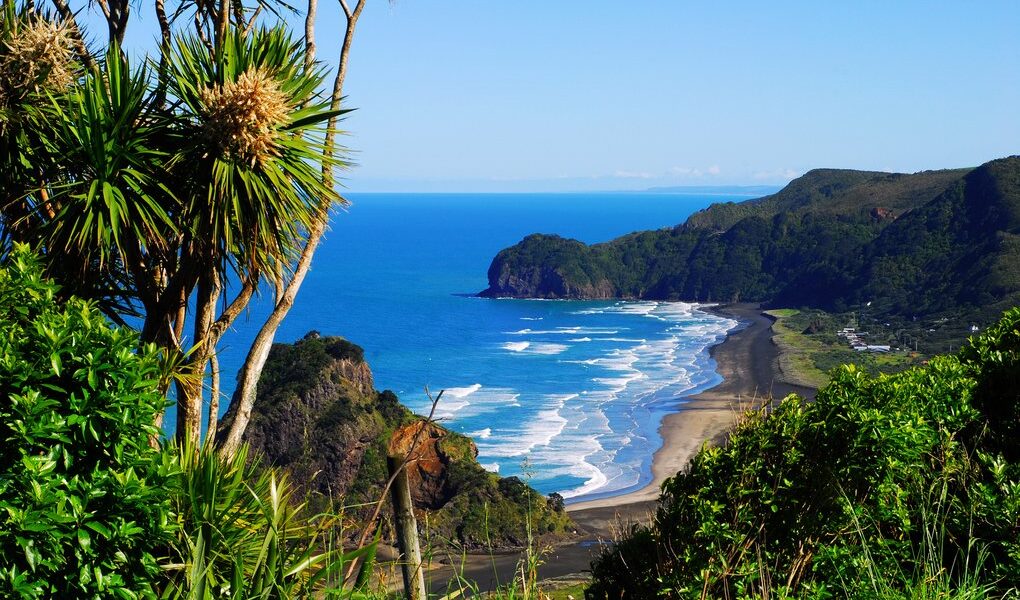
March is the first month of autumn in New Zealand, but summery conditions tend to linger, and in many parts of the country March is almost as warm and sunny as February. The further south you go, however, the more autumnal the weather, with leaves on the trees turning orange. If Easter falls in March then expect an increase in domestic tourists at popular places, otherwise March is the shoulder season in New Zealand. Here’s what you need to know about traveling in New Zealand in March.
## Discovering New Zealand in March: A Comprehensive Travel Guide
March in New Zealand marks the transition from summer to autumn, offering a unique blend of pleasant weather, fewer crowds compared to the peak season, and a diverse range of activities to enjoy. It’s a time of year when the landscape begins to transform, with hints of autumnal colours appearing, particularly in the South Island. This guide provides detailed information to help you plan your trip to New Zealand in March, covering everything from weather patterns and crowd expectations to must-visit destinations and exciting events.
### Weather in March: A Land of Contrasts
As the first month of autumn, March in New Zealand presents a mixed bag of weather conditions. Generally, temperatures remain warm, especially in the northern regions and coastal areas, particularly during the early part of the month. However, as you venture south, you’ll notice a gradual decrease in temperature. New Zealand’s unique geography, characterized by its elongated shape (stretching approximately 870 miles or 1400 km from north to south), its surrounding seas, and its towering mountain ranges, contributes to significant climatic variations across the country. This means that you could experience sunshine and warmth in one location and cooler, possibly even slightly snowy, conditions in another on the same day.
Average high temperatures in March typically hover around the high 60s Fahrenheit (approximately 19-21° Celsius) in the upper North Island. In central areas, including Wellington and the upper South Island, you can expect temperatures in the low 60s Fahrenheit (around 17° Celsius). Further south, in destinations like Queenstown and Dunedin, temperatures tend to be in the high 50s Fahrenheit (approximately 15° Celsius). Keep in mind that mountainous and inland regions are generally colder than their coastal counterparts. It’s not uncommon to witness a dusting of snow on the mountain peaks in areas such as Queenstown and Wanaka during March, adding to the scenic beauty.
While New Zealand summers are typically quite dry, rainfall tends to increase from March onwards. New Zealand is known for its abundant rainfall throughout the year, but March is not considered a particularly wet month. However, there is one notable exception: the potential impact of ex-tropical cyclones. The Pacific Islands to the north often experience numerous cyclones between November and April. Although these cyclones don’t strike New Zealand every year, the country experiences the effects of these storms about once per summer, typically in February or March. By the time these storms reach New Zealand, they have usually weakened considerably, often manifesting as severe storms. If you hear news of an approaching cyclone during your travels in New Zealand in March, it’s wise to cancel any outdoor plans, such as multi-day hikes, and opt for indoor activities for a few days. If you are camping, consider booking a room in a hotel or motel for added safety and comfort.
### Crowd Levels and Travel Costs in March
March represents a “shoulder season” in New Zealand, falling between the peak summer months and the quieter winter period. While you won’t encounter the same high volume of tourists as in mid-summer, the weather is still generally pleasant, making it an attractive time to visit. As such, it is not considered the low season.
It’s important to be aware that Easter often falls in March, leading to school holidays. New Zealanders themselves enjoy exploring their own country, so expect to see an increase in domestic tourists at both popular and lesser-known destinations during this period. Booking accommodations and activities in advance is highly recommended, especially if your trip coincides with the Easter break.
Camping is a popular way for travellers to experience New Zealand’s natural beauty. As temperatures begin to cool down, campsites may become less crowded, although you should not expect complete solitude, especially at popular locations. Many travellers opt for recreational vehicles (RVs) rather than tents, providing them with greater flexibility and comfort regardless of the weather.
### Exploring New Zealand in March: Where to Go
March offers a diverse range of destinations to suit various interests and preferences.
For those seeking beachside relaxation, March can still be a great time to enjoy New Zealand’s stunning coastlines, particularly earlier in the month. In fact, sea temperatures are often warmer in March than in early summer, as they have had several months to warm up. If swimming in the ocean is on your itinerary, you’ll find ample opportunities. Northland, the greater Auckland region, and the Coromandel Peninsula are particularly recommended for beachgoers in March. The upper South Island, around Nelson, the Marlborough Sounds, and Golden Bay, also enjoys warm temperatures during this month.
Alternatively, if you are drawn to the majestic mountains and crisp, invigorating air, March offers excellent conditions for exploring alpine regions. Head to Queenstown, Wanaka, or Aoraki Mt. Cook for breathtaking mountain vistas and a wide array of outdoor adventures.
### Activities and Experiences in March
Beyond beaches and mountains, March offers a plethora of outdoor activities to enjoy.
Hiking is a particularly appealing option during this time of year. With generally mild and dry conditions, March provides an ideal climate for exploring New Zealand’s extensive network of trails. New Zealanders are passionate about hiking, so you’ll find numerous short and long-distance trails throughout the country. While popular destinations like the Abel Tasman National Park and the Tongariro National Park may still attract considerable crowds in March, it’s relatively easy to discover quieter trails if you prefer a more secluded experience.
Mountain biking is another fantastic activity to pursue in March, benefiting from the same favourable weather conditions. You’ll find a variety of trails, ranging from short and easy routes to challenging long-distance options, catering to different fitness levels and skill sets. The 93-mile (150 km) Otago Central Rail Trail offers a relatively flat and scenic ride, ideal for bikers seeking a leisurely experience. The Old Coach Road in the central North Island is a delightful 2-3 hour trail that combines cultural insights, historical significance, and stunning landscapes.
### March Events: Festivals and Holidays
**Easter:** This prominent Christian holiday occasionally falls in March. Even if you don’t observe the religious aspects of Easter, be aware that schools are typically on vacation, and many businesses are closed. The sale of alcohol is restricted on Easter Sunday and Good Friday, except when purchased to consume with a meal in a licensed restaurant.
**Wildfoods Festival, Hokitika:** For a truly unique culinary adventure, consider attending the Wildfoods Festival in Hokitika, a small town on the West Coast of the South Island. This festival showcases unusual, sometimes bizarre, and occasionally cringe-worthy foods, such as bull testicles and deep-fried insects. Of course, there are also more conventional food options available, along with a wide selection of craft beers and fine wines. The festival draws visitors from all over the South Island, so it’s advisable to book accommodation well in advance.
### Exploring New Zealand in March: Suggested Itineraries
Consider the following itineraries to make the most of your trip to New Zealand in March:
* **New Zealand’s North Island – 7 Days:** Explore the diverse landscapes and attractions of the North Island, from the culinary delights of Wellington to the dramatic volcanic scenery of Tongariro National Park.
* **New Zealand’s Cities, Parks, and Mountains – 12 Days:** Discover a blend of urban experiences, stunning mountain scenery, lush native forests, and picturesque beaches, combining adventure and relaxation.
* **South Island Adventure – 5 Days:** Embark on a journey through four distinct regions of the South Island: Christchurch, Aoraki Mt. Cook National Park, Central Otago, and Queenstown.
This expanded guide provides a more detailed and comprehensive overview of travelling to New Zealand in March, ensuring a richer and more informative experience for prospective visitors.
B-1842

